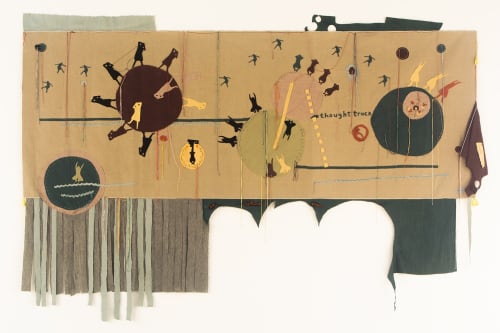Conducting a collaborative research since 2012, Maria Andersson and Nancy Atakan study Turkey’s integration of Swedish physical culture practices as part of the modernization efforts in the early 20th century. Investigating the adaptation of gymnastics techniques and folkloric elements, the artists unfold narratives on Selim Sırrı Tarcan, the founder of physical education and the Olympics Committee in Turkey, as well as on the accomplishments of his daughters.An engineer soldier and active member of the Young Turk movement that revolted to restore the constitutional monarchy during the era of Sultan Abdulhamid II, Tarcan (1874-1957) was sent abroad for a year by the governing bodies in 1909. Seeing this as an opportunity to broaden his knowledge in sportswriting and teaching, he requested to be sent to Stockholm to attend the Gymnastiska Centralinstitutet (Royal Gymnastics Central Institute), established by Pehr Henrik Ling in 1813. Tarcan was particularly influenced by the Ling gymnastics, which was characterized by aesthetic, medical, military, and educational attributes. Upon his return to Istanbul, he was assigned to design a physical education system in order to support the ongoing reform endeavours. Training both male and female teachers, he aimed to restructure the social foundations by raising healthy and strong future generations. The Training Festival that Tarcan first organized in 1916was a showcase of these methods and ideals, which were further considered required instruments in the development of the Republic of Turkey. Not only did he adopt the Swedish approach to gymnastics but also initiated a Youth Anthemin the country, by commissioning Turkish lyrics to the Swedish folk song Tre trallande jäntor[Three Carolling Girls], composed by Felix Körling. Serving as an MP in his later years, Tarcan raised two daughters, Selma (Mimaroğlu) and Azade (Kent), who became pioneers in modern dance and therapeutic gymnastics respectively. Inspired by their life stories, the individual and collective works in Forward, March!explore the intertwined relationship between physical education and the emancipation of women in Turkey.Andersson’s videos, photographs, and texts on Selma (b. 1906) question the notion of ideal, presenting the body as a tool for societal changes. She connectsSelma’s aesthetic-based dance philosophy, rooted in the Ancient Greek, with the American dancer Isadora Duncan’s style of free and natural movements. The artist also highlights the making of the Youth Anthem and the elevation of the male-only folk
dance—Zeybek—into a ballroom dancing with a new choreography by the father and daughter. Atakan’s works on Azade (b. 1908) are pertinent to the artist’s ongoing survey of women professionals and role models in Turkey. A participant of her physical training classes in Istanbul at the end of the 1970s, Atakan examines the generational transmission of body movements by focusing on the younger sister’s self-invented practice. Moving between real and fiction stories of women figures, the artist’s drawings, videos, and needleworks become crucial means referencing the missing protagonists in history. Programmed by Farah Aksoy from SALT, Forward, March!includes works selected from Andersson and Atakan’s show organized in Gothenburg in 2018 as well as new collaborative video and textile works. The public programs, which begin with aperformance by the artists on June 27 at SALT Beyoğlu, will be announced at saltonline.org and SALT Online social media channels.

